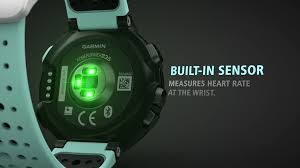Back in 2016 I wrote a very opinionated piece about Why I DON’T like Optical HR Monitors. Four years ago is a lifetime in the sports tech world. This is an updated feature about them.
When it comes to recording reliable Heart Rate (HR) data, the best way to do so is with a strap around the chest. That is after all where the heart is in the body. But I realise that not everyone particularly females, like wearing a HR strap. The strap gets in the way and can be uncomfortable with a bra, or just annoying being around the chest.
The optical HR sensor is a solution to not having to wear a HR strap.
Back in 2016 when I wrote my original article on the topic, optical HR sensors were prone to errors (and to a certain extent they still are). Have a read of my original article:
I still don’t like them for the reasons I spell out in the article, but technology has improved since then and the reliability issues are not as severe if they are worn correctly. I even wear one all day in my Garmin Forerunner 935, although when it comes time to do a workout I strap on a HR strap to ensure I get the best HR data that I can whilst training.
I no longer stand by my advice to sell your optical sensor watch, unless it’s solely an activity tracker, but if it’s something like a Garmin Forerunner then you can still use it. I’d encourage you to use a HR strap to get the most reliable HR data, but it might be that you really can’t stand wearing a strap for whatever reason, you can still get reasonably reliable HR data if you follow these steps below. On occasion when I’ve forgotten to take my HR strap somewhere have been known to run or ride collecting data from the optical sensor instead of a HR strap.
Consistent HR Data
The key getting consistent reliable data is to have the watch strap nice and snug. You don’t want it too tight to cut off circulation, but you don’t want it loose enough to riggle on your wrist.
A snug fit will mean the optical sensors are picking up changes in your skin consistently and give you the most reliable data, without letting too much sweat, mud or other contaminants under the watch to interfere with the optical sensor.
How Does an Optical Heart Rate Monitor Record
If you would like further advice feel free to contact Coach Ray.
Coach Ray is the Head Coach & Director of Qwik Kiwi – Endurance Sports Consultant and is a prominent triathlon and marathon coach in New Zealand.
Coach Ray specialises in assisting first timers and recreational athletes to achieve their sporting goals. He can be contacted at www.qwikkiwi.com, coachray@coachray.nz and 021 348 729.
Share this post so your friends can benefit as well.
